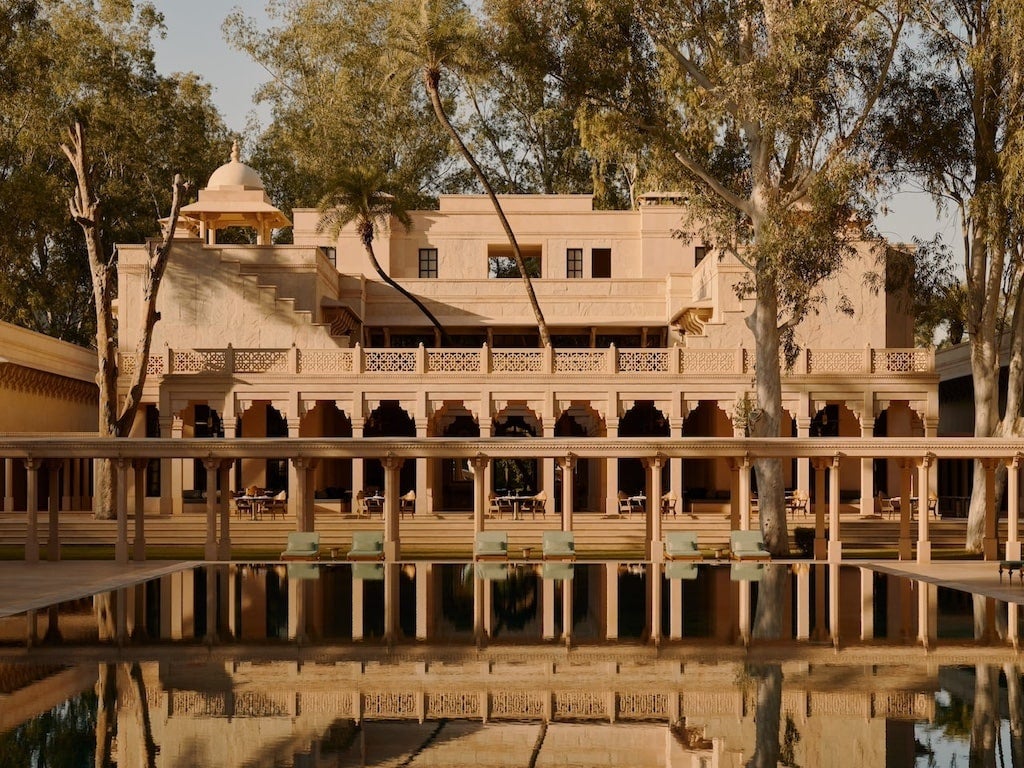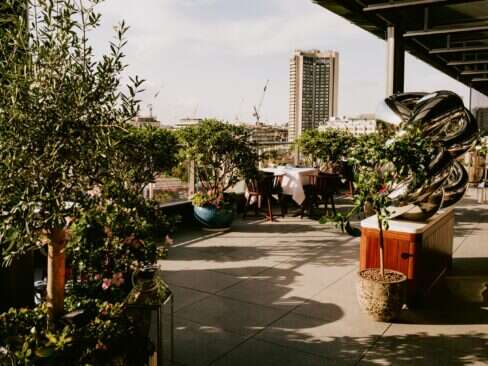Jai Singh Prabhakar wasn’t one for understatement. The Maharajah of Alwar in Rajasthan, India’s largest state, legend has it, once arranged for a private train to transport his favorite horse to a five-star suite in Bombay to enjoy a little equine R&R. Though there’s no documented evidence of a horse ever clip-clopping up to a check-in desk, the veracity of the most famous escapade attributed to Jai Singh – putting half a dozen Rolls-Royce’s on India’s streets to work as garbage collection vehicles – rests on firmer footings. That was a riposte to a perceived snub at Rolls-Royce’s London showroom in 1920 that ultimately required much groveling from the world’s most prestigious automobile brand before the vehicles were eventually withdrawn from garbage duties.
The Maharajah was one of many such princely plutocrats in pre-independence India, whose autocratic excesses and unrestrained opulence in Rajasthan resonate across this dreamy desert-bound corner of India. Their legacy of forts and spectacular palaces dotting the horizon in true fairy-tale fashion, amid a timeless sun-stroked landscape, makes Rajasthan a magical destination.
And a very busy one. Many years ago, I was able to stay in Maharajah’s palaces, often as the only guest, sometimes with the Maharajah still in situ. One of them even had photos on the bedside table of Queen Elizabeth II and Prince Philip from their earlier visit. These days, along with Delhi and Agra, Rajasthan forms the western point of a well-trodden tourist triangle and is a top target in an over-touristed world. So, what to do? Head for the hills.
[See also: The 29 Best New Hotel Suites in the World]

The Allavari Hills, splayed across Rajasthan for 500 miles, are the oldest mountains in India and by some estimates, the world. A couple of hours from Jaipur, the state capital, amidst the spectacular shadowy silence of the hills, Jai Singh constructed a resplendent regal hunting lodge in the same spot where his antecedents, the earlier Maharajahs of Alwar had always done. The only vestiges of these previous structures, however, are the crumbling 16th-century exterior walls from the time of Mughal emperor, Akbar The Great. But just as Rajasthan’s Maharajas harbored an innate instinct for something or somewhere exceptional, so does the world’s preeminent luxury hospitality brand, Aman Resorts, and within the confines of those ancient walls, another palace has emerged in Amanbagh.
Stay
Subsumed into a sublime serenity punctured only by the occasional squawk of a peacock, and nudged up next to the village of Ajabgarh, going about its business pretty much as it has done for centuries, Amanbagh (Aman Garden) casts a mesmerizing spell of timeless tranquillity. Though it boasts a helipad, the new highway from Delhi has cut the transfer time from the Indian capital (in one of the property’s 7-series BMWs) to under four hours. A flower-strewn welcome ceremony with an elaborately attired local woman chanting the Gayatri mantra (one of Hindu’s holiest) sets the stage for Aman’s famously discreet but uncompromising levels of service. All quietly overseen by the unwaveringly suave general manager, Harry Fernandes.
[See also: Leela Palace Chennai: Quintessential Indian Opulence]
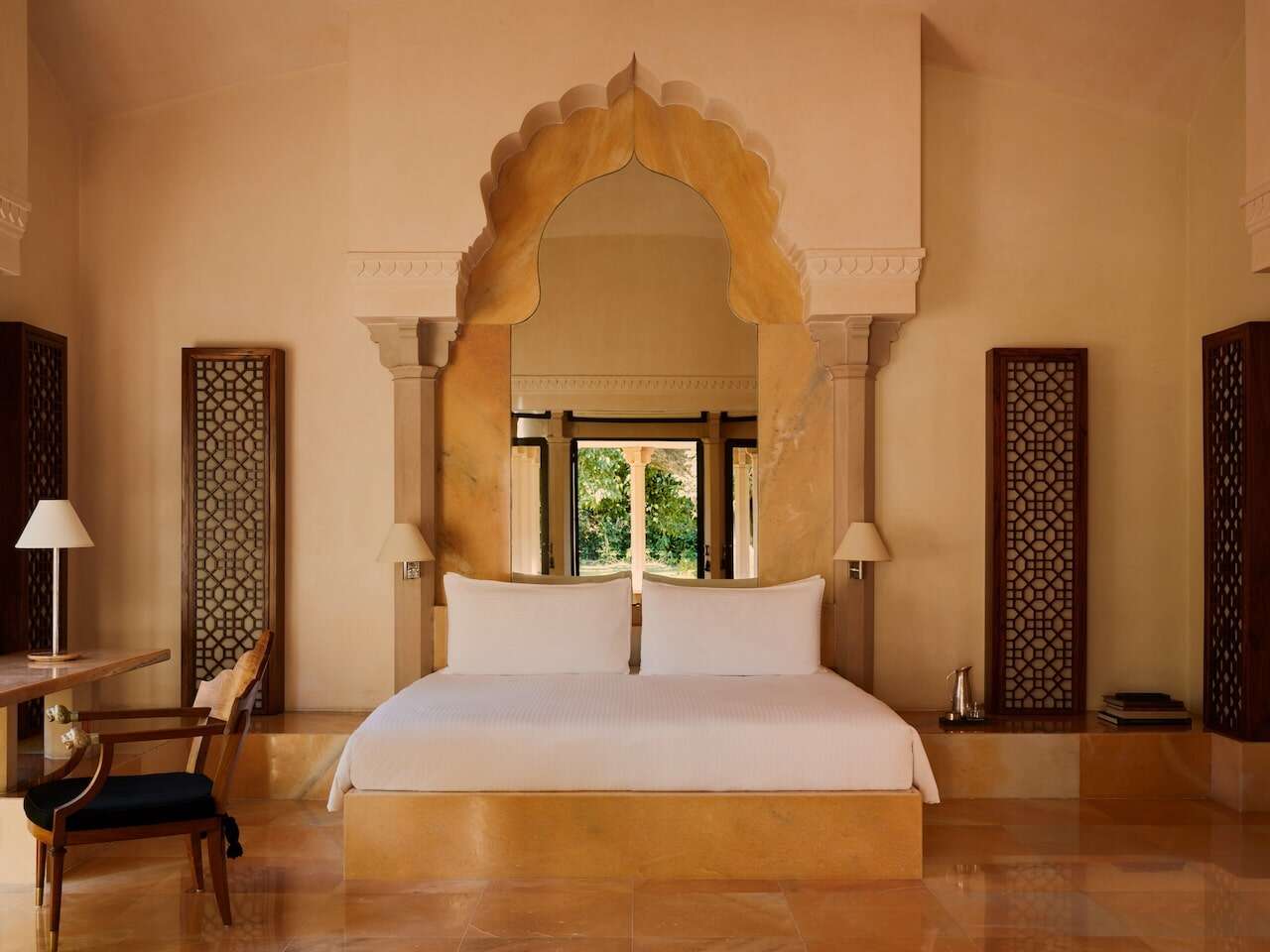
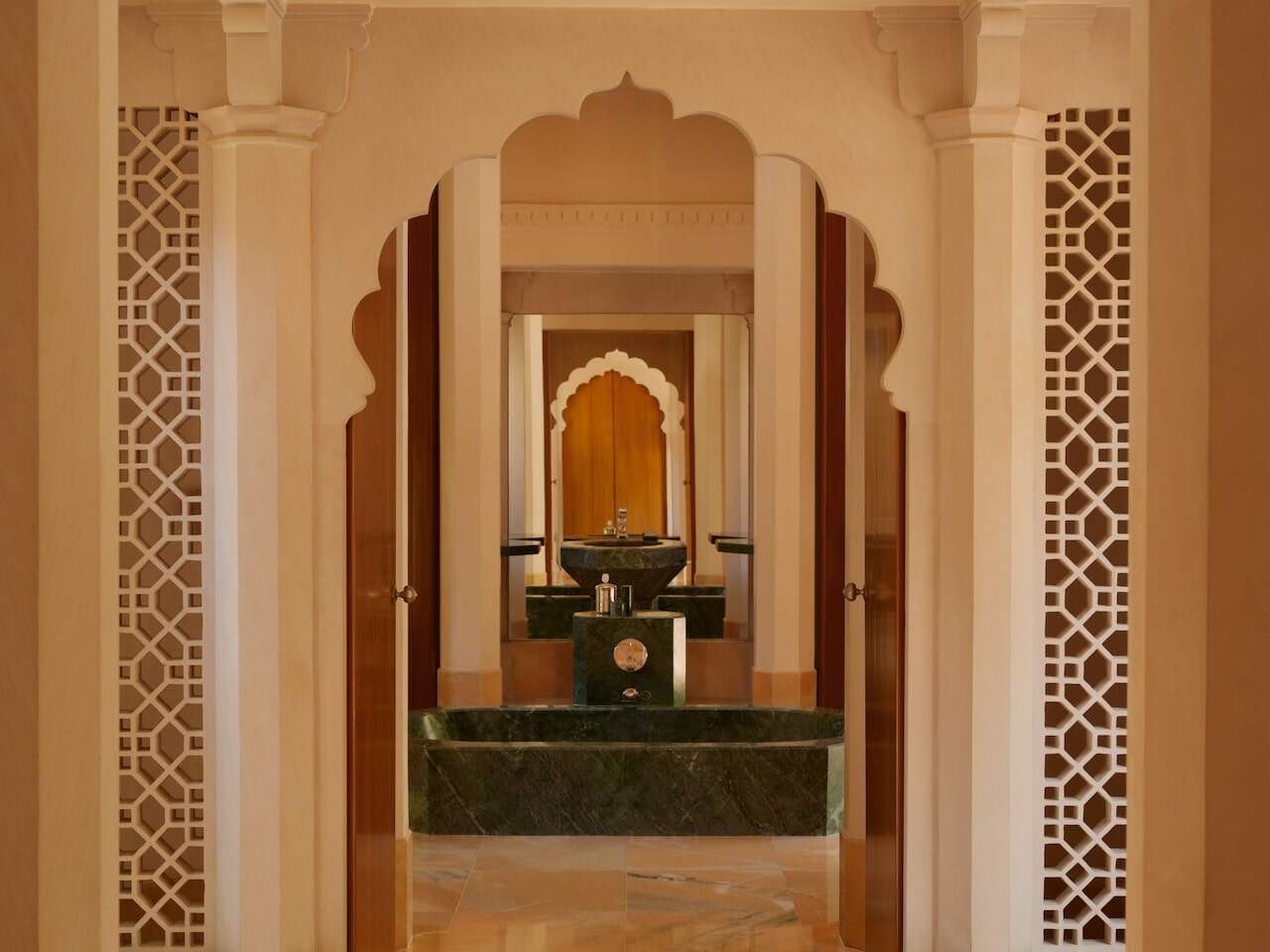
There are just 37 rooms including 15 pool pavilions, all of them spacious veering towards cavernous, with over 150 staff (including four “monkey men” to contain the langurs), mostly drawn from the surrounding villages, many of them with Amanbagh since its 2005 inception. For those whose affirmation of ultra-luxury involves a swimming pool of some size, the 108-ft-long green-marbled siren shimmering away in the heat haze at the heart of the property, will exert an irresistible aquatic allure. Even the shallow children’s pool is 40 ft long.
The overall picture is of an off-grid secret garden steeped in indulgence, indolence and more than a little opulence, hidden away from everywhere and everything, but with Rajasthan and its myriad treasures readily accessible. As a monkey saunters into my pavilion and calmly grabs a banana before retreating onto the crumbling perimeter wall at the bottom of the garden (which seems bigger than a tennis court), a peacock suddenly unveils his resplendent fan right in the middle of the lawn. The monkey darts a look of disdain that says “sucker!”, as I realise what the “monkey pole” is placed up the corner of the room for. But that’s all ok, this has always been their place. They’re just letting me know.
Dine
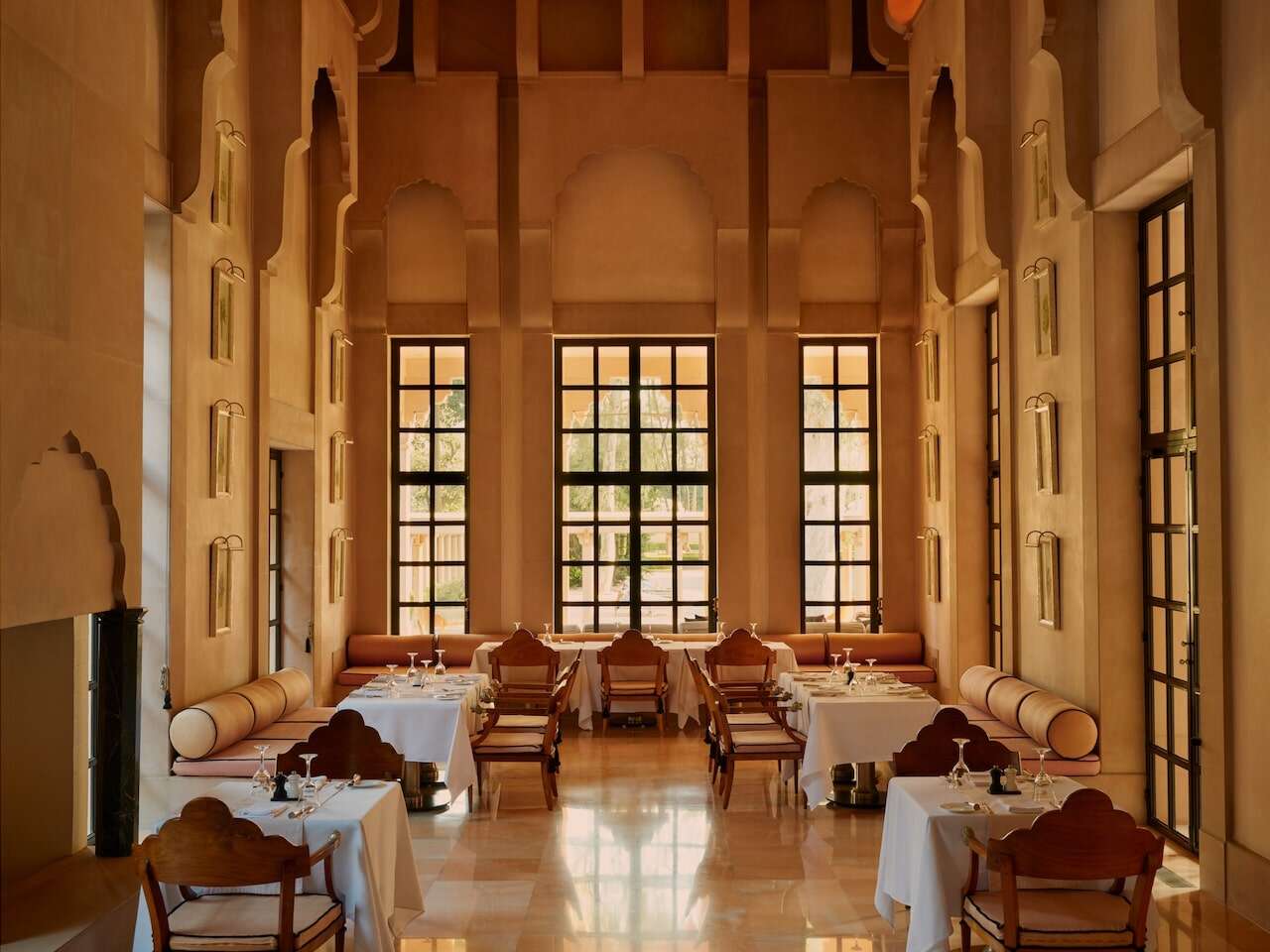
Exceptional North Indian cuisine is interspersed with classical dishes from around the Indian sub-continent. The nearby kitchen garden extending for over 2.5 acres isn’t merely a bit of showy greenwashing but serves as a high-quality organic resource responsible for supplying over two-thirds of the property’s fresh produce.
It is probably the diversity of potential locations, however, that elevates dining at Amanbagh into a superlative sensory experience. That can be in the palatial triple-height dining room, out on the veranda overlooking the pool, or from the first-floor library terrace looking down onto the accompanying folk musicians and singers.

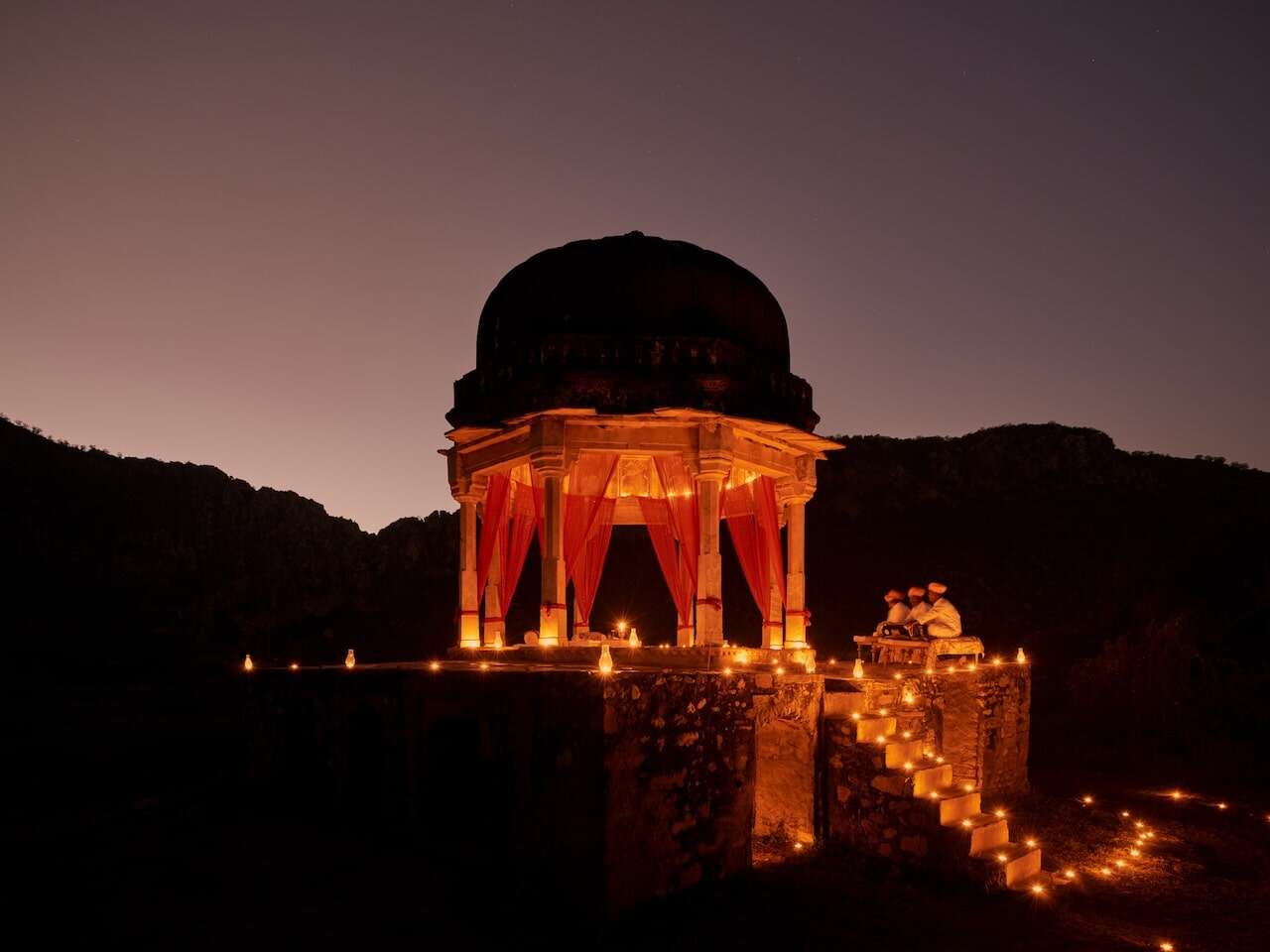
But with that well-honed Aman habit of going above and beyond, a range of other personalised possibilities is also proffered; from lunch around a nearby lake, an intimate dinner-a-deux up on the roof, a candle-strewn lawn hidden away in a private part of the property or regally perched up on a nearby chattri (small pavilion). Amidst gently wafting warm winds and crystal-clear skies, if lucky, maybe even under a full moon, evenings will often wistfully unfold into exquisite experiences.
Design
Ed Tuttle, the late Seattle-born architect most closely associated with Aman, who set down markers for contemporary luxury hotel design in 1988 when he unveiled Aman’s very first property, Amanpuri, in Thailand, also designed Amanbagh. It’s often cited as among his finest work. His philosophy espousing “pure spaces – tranquillity and order “ is in evidence with a sleek pale pink property drawing inspiration from ancient Rajput fortresses and palaces.
The cupolas, domes, and towers of Rajput architecture are skilfully integrated into smooth symmetrical contemporary structures that slot seamlessly into the landscape and coalesce into a building that not only looks like it belongs there but manages to be rivetingly beautiful.
The expansive minimalist interiors embracing a variety of organic materials, not least the liberal use of locally sourced marble, are similarly style-infused. Huge sunken bathtubs carved from single pieces of the same green Udaipur marble used for the pool, occupy the centre of the massive bathrooms. They’re invariably found filled with frangipani flowers floating on the surface when returning back in the evening. This superlative interior and exterior design at Amanbagh belies its 20 years of existence. It all looks as fabulously fresh and as stunning as it would have done back then.
Relax

If you can’t relax here, it’s probably not going to happen anywhere. Stand amidst the bougainvillea bedecked gardens while a bird of prey slowly circles high up in an endless luminescent sky as the bone-dry desert heat holds you hostage, and just feel the stress slicing off. Strolling intuitively replaces rushing, and engines gently cool as rural Rajasthan’s languid laid-back other-worldly way of life tightens its grip on increasingly subdued senses.
Wellness is a serious business at Amanbagh. In the homeland from which they evolved thousands of years ago, a deep dive is taken into the ancient holistic practices of yoga and ayurveda, the latter sourcing from over 200 plants in the property’s meticulously tended ayurvedic herb garden. Inside the sybaritic confines of the spa and under the supervision of the in-house Ayurveda physician, a wide array of potential treatment programs is proffered. They can range from a Shirodhara head massage, where oil is continuously poured onto the forehead, to personally tailored “Wellness Immersions” of three days to three weeks duration, and educational programs in the new ayushala (ayurvedic nutrition) center.
Yoga is guided with the same dedicated oversight, for both novices and experienced yogis alike. One of the more endearing aspects of the yoga program are the pre-breakfast trips to one of the nearby fortresses where your downward dog can gaze down from high up in the Aravalli Hills as the morning sun slowly slides its way along the valley below.
Explore
Whilst personalized day trips to Jaipur or Agra can be arranged for those capable of psyching themselves up for the crowds, simply staying put in this lost little outpost of Jai Singh’s long-lost empire is a seductive alternative. Devoid of the tourist hordes laying siege to the Instagram to-do list, Amanbagh remains enveloped by the rich remnants of Rajasthani culture.
Within an easy drive in one of the property’s open-topped Jeeps are several forts dating from the 16th century, and a plethora of temples, including the 6th-century Neelkanth temple complex on the edge of Sariska National Park. The 300-square-mile park is what remains of the Maharaja’s hunting grounds though conservation and protection have now supplanted hunting and where, with a little luck, tigers and leopards can still be spotted.
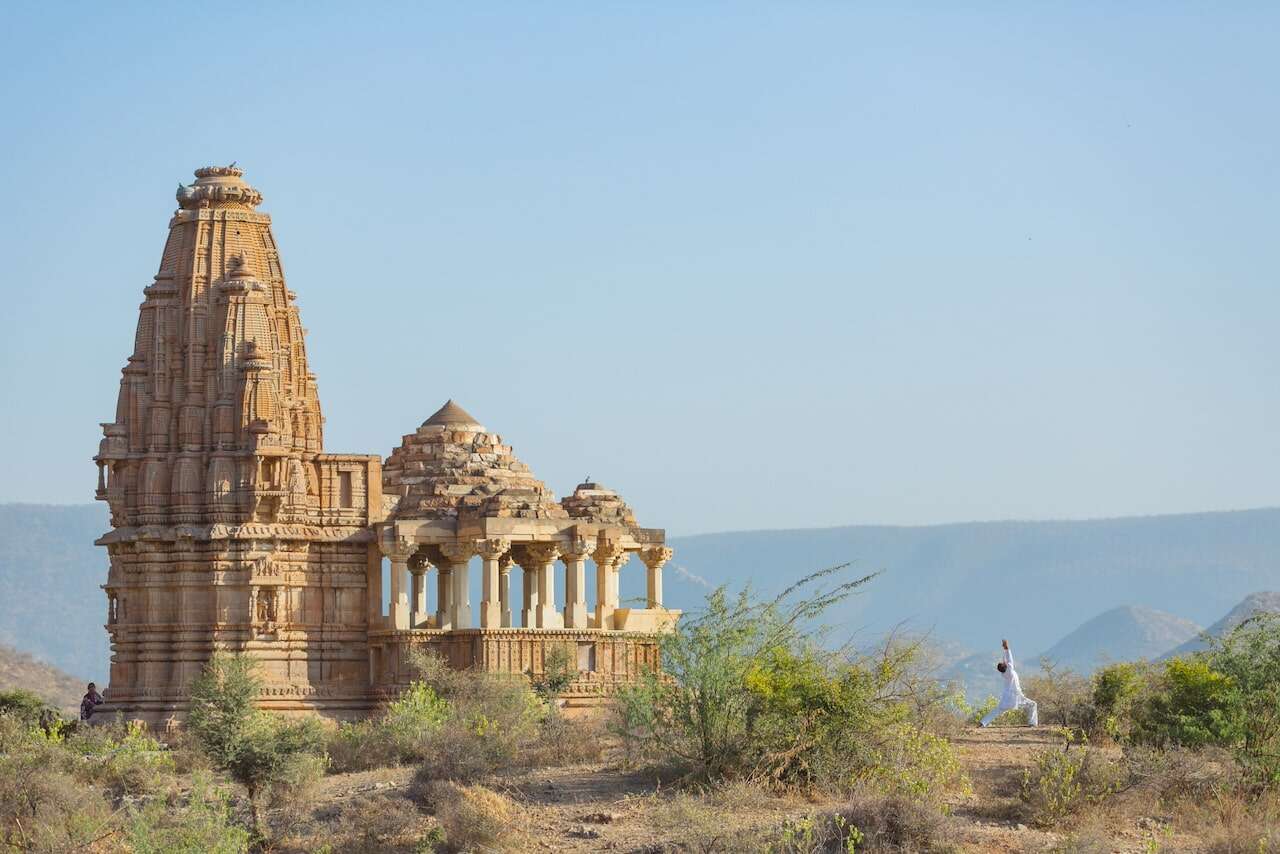
Bhangarh is a 16th-century fortress city abandoned soon after its construction because, it’s widely believed, the place was cursed by a local saddhu (holy man) and has remained haunted ever since. Locals purvey a litany of folk tales about malevolent spirits and ill-fated accidents befalling those who venture in there at night, which is actually forbidden.
Most days, the “cowdust tour” heads out into the fading sunlight among the fields and byways of the surrounding villages in the late afternoon when animals are herded back home. Amidst a rhythmic routine that’s unfolded across this patchwork of pastoral perfection, seemingly since forever, guests are able to absorb an authentic backwater Rajasthan, and with Amanbagh so embedded into these communities, the welcome is always an effusively warm one.
Along with camel safaris for the more adventurous, there are guided hikes, including to the King’s Throne. Carved into the rock on the edge of Sariska National Park, it’s where Jai Singh would wait, gun in hand, for a tiger or leopard to be enticed out of the jungle by a tethered goat. Widely regarded as one of the best tiger shots of his day, as well as one the best polo players (essential accomplishments in the Maharajah business), he was so prolific that by the time Sariska was declared a wildlife reserve in 1955, (and a national park in 1990) there were hardly any tigers left. They’ve been gradually reintroduced from Rajasthan’s principal tiger reserve at Ranthambore, the location of Aman’s other Indian outpost, Aman-I-Khas, and with the arrival of three cubs in March 2024, Sariska’s tiger population is now back up to 33.
Maharajah Jai Singh probably wouldn’t take kindly to people sitting on his outdoor throne, but he’s long gone; propelled into exile by his British puppet masters in 1933 after his excesses and outrageous antics made his position untenable, even for them. One suspects, however, he’d have loved the 21st-century palace now sitting where his old hunting lodge once was. There’s even space in the garage for a few royal garbage trucks.
Pool pavilions start from $1,428 per night including taxes and charges. Contact amanbaghres@aman.com, +91 9828 166 737, aman.com





